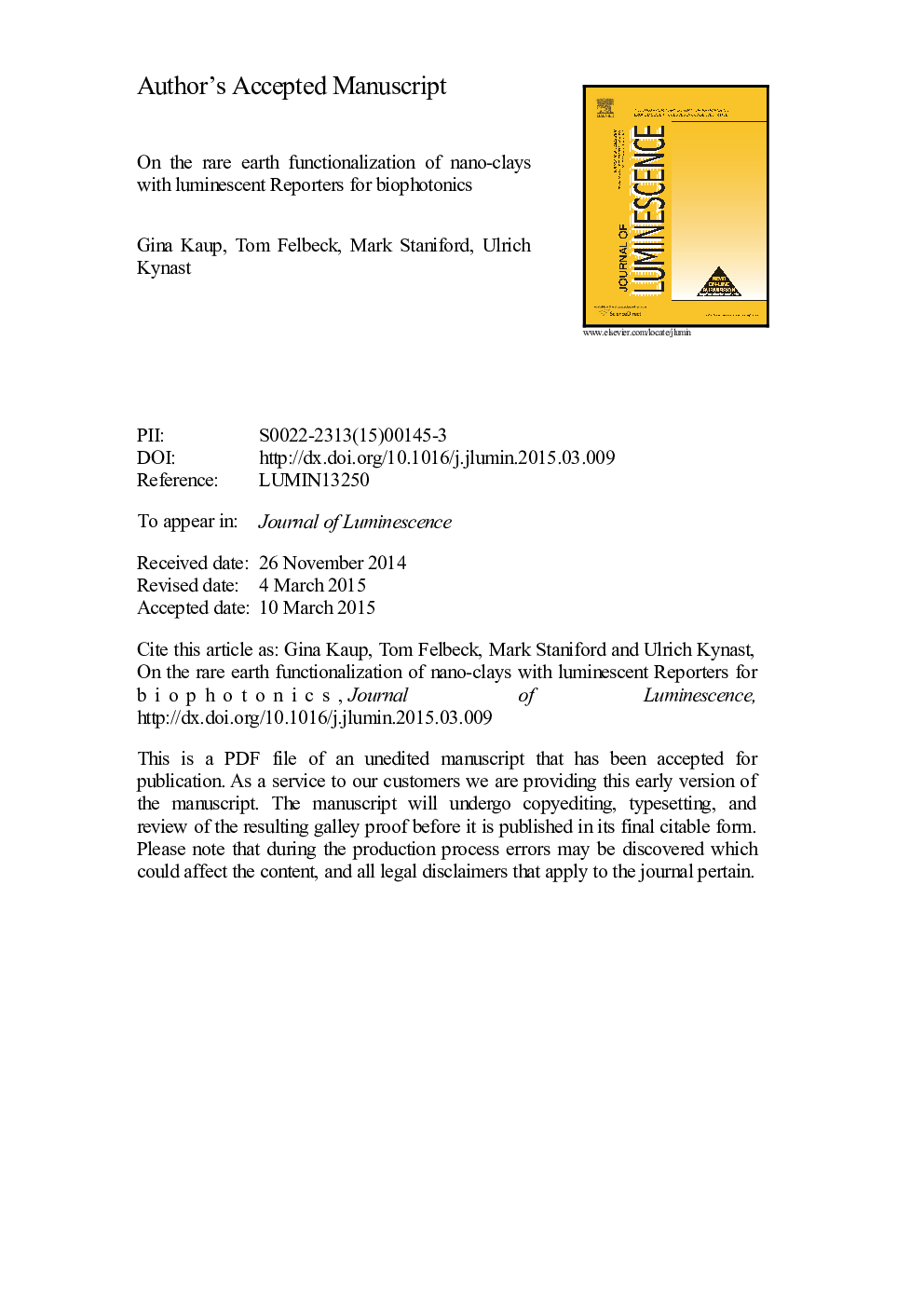| Article ID | Journal | Published Year | Pages | File Type |
|---|---|---|---|---|
| 5399145 | Journal of Luminescence | 2016 | 19 Pages |
Abstract
Completely water dispersible nanoclays can be equipped with optical functions for eventual uses in biophotonics. For this purpose, 3-mercaptopropylmethyldimethoxysilane is grafted as a linker to the rims of strongly anisotropic clay disks for the subsequent covalent attachement of a rare earth β-diketonate, co-coordinated with epoxy-functional phenanthroline (“Eu(ttfa)3epoxiphen”). Silane grafting yields of approximately 80% with respect to available rim-SiOH groups can be obtained as demonstrated by reliable determination of the grafted mercapto-groups with 5,5â²-dithiol-bis-(2nitrobenzoic acid) (“Ellman's reagent”). The final linkage of Eu(ttfa)3epoxiphen to the rim mercapto-groups competes with mere polar adsorption on the laponite faces; however, the rim linkage can be confirmed via the complex's excitation and emission spectra and X-ray diffraction of the solids obtained, and corresponding absorption spectra.
Related Topics
Physical Sciences and Engineering
Chemistry
Physical and Theoretical Chemistry
Authors
Gina Kaup, Tom Felbeck, Mark Staniford, Ulrich Kynast,
